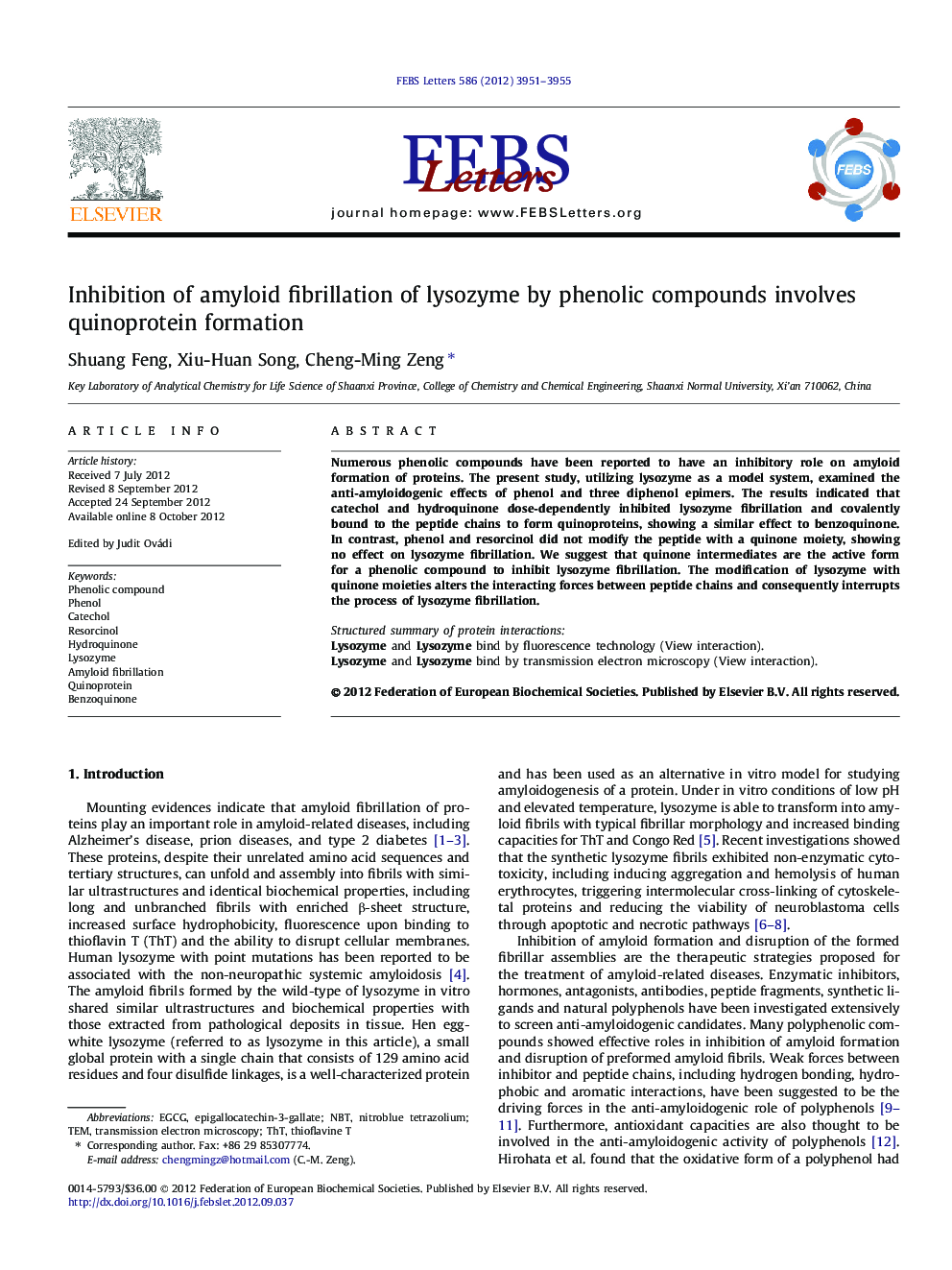| کد مقاله | کد نشریه | سال انتشار | مقاله انگلیسی | نسخه تمام متن |
|---|---|---|---|---|
| 2047882 | 1074044 | 2012 | 5 صفحه PDF | دانلود رایگان |

Numerous phenolic compounds have been reported to have an inhibitory role on amyloid formation of proteins. The present study, utilizing lysozyme as a model system, examined the anti-amyloidogenic effects of phenol and three diphenol epimers. The results indicated that catechol and hydroquinone dose-dependently inhibited lysozyme fibrillation and covalently bound to the peptide chains to form quinoproteins, showing a similar effect to benzoquinone. In contrast, phenol and resorcinol did not modify the peptide with a quinone moiety, showing no effect on lysozyme fibrillation. We suggest that quinone intermediates are the active form for a phenolic compound to inhibit lysozyme fibrillation. The modification of lysozyme with quinone moieties alters the interacting forces between peptide chains and consequently interrupts the process of lysozyme fibrillation.Structured summary of protein interactionsLysozyme and Lysozymebind by fluorescence technology (View interaction).Lysozyme and Lysozymebind by transmission electron microscopy (View interaction).
► The anti-amyloidogenic effects of phenol and three diphenol epimers are investigated.
► Catechol and hydroquinone exhibit inhibitory roles on lysozyme fibrillation.
► Quinoprotein is involved in the inhibitory role of a phenol on amyloid formation.
► Quinone is the active form in the anti-amyloidogenic activity of phenols.
Journal: FEBS Letters - Volume 586, Issue 22, 16 November 2012, Pages 3951–3955